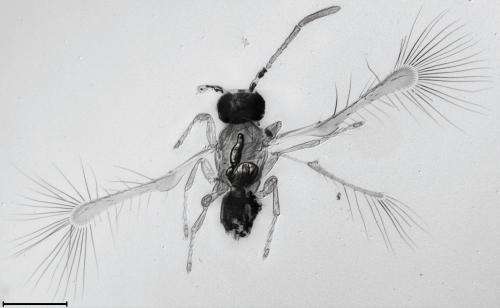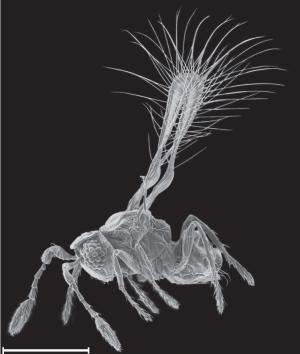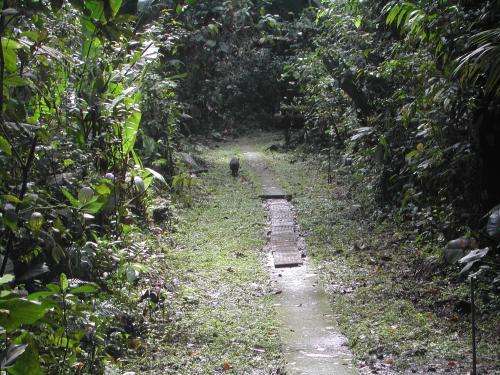Tinkerbella nana—a new representative from the world of fairyflies

Mymaridae, commonly known as fairyflies, are one of about 18 families of chalcid wasps. Fairyflies occur worldwide, except in Antarctica. They include the world's smallest known insect - Kikiki huna, the body length of which is only 155 μm, and the smallest known adult insect – the wingless male of Dicopomorpha echmepterygis which is only 130 μm. Although fairyflies are among the most common chalcid wasps, they are seldomly noticed by humans because of their minute size. Their apparent invisibility, gracile bodies and delicate wings with long fringes resembling the mythical fairies have earned them their common name.
All but two known fairyfly species are parasitoids of eggs of other insects. These eggs are commonly laid in concealed locations, such as in plant tissues or in leaf litter or soil and are difficult to find, so for the most part the host insects of fairyflies are unknown. Specimens of the new species Tinkerbella nana were collected at the La Selva Biological Station, a lowland rainforest research and education facility owned and managed by the Organization for Tropical Studies, located in the province of Alajuela, Costa Rica. They were collected by sweeping in fairly young (no more than 20 years old) secondary forest mixed with a primary forest. All the specimens collected were below 250 μm in length. The reduced wing surface and relatively long setae of fairyflies and many other minute flying insects likely have an aerodynamic function, perhaps to reduce turbulence and hence drag on a wing flapping at several hundred beats per second. The study of the new species was published in the open access journal Journal of Hymenoptera Research.

Almost 2000 years ago, Pliny the Elder (ca. 23 A.D.) stated "Rerum natura nusquam magis quam in minimis tota est" loosely translated as "Nature is nowhere as great as in its smallest." Lacking any means of magnification, he could not possibly have seen the intricate structure and beauty of fairyflies or other minute organisms. But his statement certainly holds true.

"If something is physically possible in living things, some individuals of at least one species, extinct or extant, will likely have achieved it. So the lower size limit, by whatever measure of size is chosen, was almost certainly already evolved—somewhere, sometime. If we have not already found them, we must surely be close to discovering the smallest insects and other arthropods", says the lead author, John Huber from Natural Resources Canada.
More information: Huber JH, Noyes JS (2013) A new genus and species of fairyfly, Tinkerbella nana (Hymenoptera, Mymaridae), with comments on its sister genus Kikiki, and discussion on small size limits in arthropods. Journal of Hymenoptera Research 32: 17. doi: 10.3897/JHR.32.4663
Journal information: Journal of Hymenoptera Research
Provided by Pensoft Publishers


















